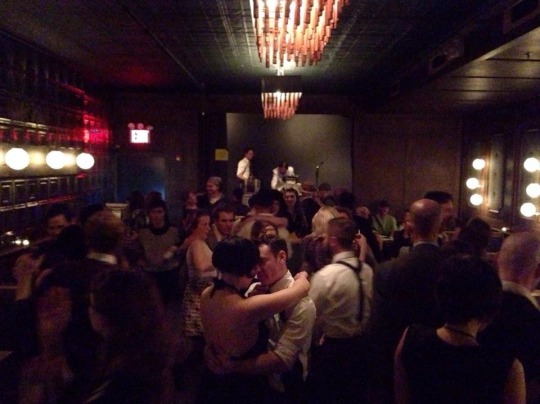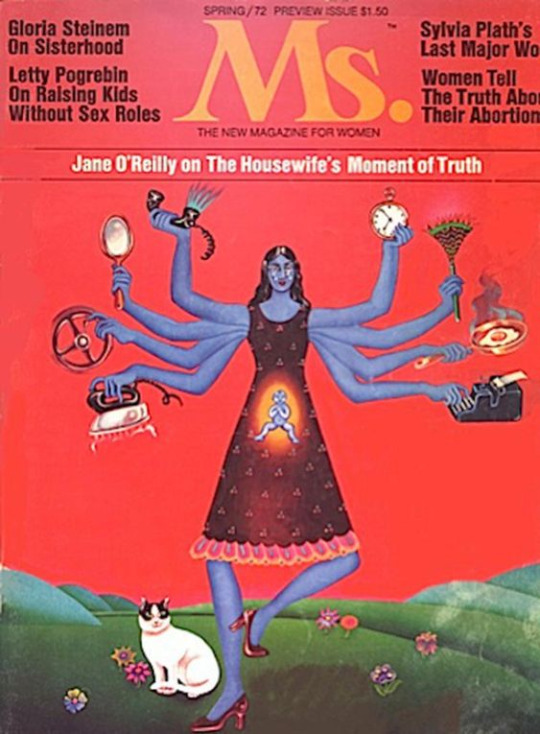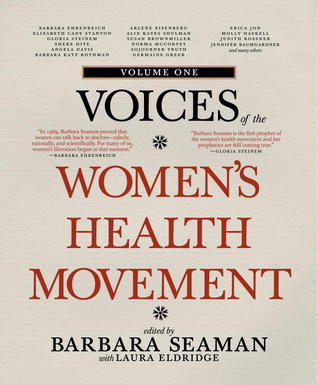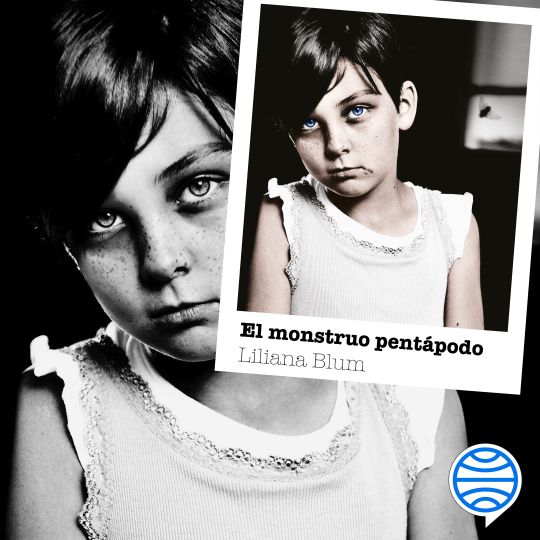#alix kates shulman
Explore tagged Tumblr posts
Text
Alix Kates Shulman: Love, the hard way
“… most of us learned about love the hard way. Even warnings are probably useless, for somehow, despite the severest warnings of parents and friends, hundreds, thousands of women have forgotten themselves at the last minute and succumbed to the lies, promises, flatteries, or mere attentions of lusting, lovely men, landing themselves in complicated predicaments from which some of…
View On WordPress
0 notes
Text

Footnotes 101 - 188
[101] Toby Rollo, “Feral Children: Settler Colonialism, Progress, and the Figure of the Child,” Settler Colonial Studies (June 2016), 1–20.
[102] Gilles Deleuze, “Postscript on the Societies of Control,” October 59 (1992), 3–7.
[103] Institute for Precarious Consciousness, “We Are All Very Anxious,” WeArePlanC.org, April 4, 2014, http://www.weareplanc.org/blog/we-are-all-very-anxious/.
[104] Sitrin, Everyday Revolutions, 37.
[105] Ivan Illich, Tools for Conviviality (New York: Harper & Row, 1973), 12.
[106] Our readings and understandings of Illich’s work, and our understanding of conviviality in particular, is indebted to conversations with friends who either knew Illich personally or worked closely with his ideas, including Gustavo Esteva, Madhu Suri Prakash, Dan Grego, Dana L. Stuchul and Matt Hern.
[107] Quoted in The Invisible Committee, To Our Friends, 232–3.
[108] Marina Sitrin, ed., Horizontalism: Voices of Popular Power in Argentina (Oakland: AK Press, 2006); Sitrin, Everyday Revolutions.
[109] Rebecca Solnit, A Paradise Built in Hell: The Extraordinary Communities That Arise in Disaster (New York: Penguin Books, 2009), 2.
[110] Idem, 7.
[111] Leanne Simpson, “Dancing the World into Being: A Conversation with Idle No More’s Leanne Simpson,” Yes! Magazine, March 5, 2013, http://www.yesmagazine.org/peace-justice/dancing-the-world-into-being-a-conversation-with-idle-no-more-leanne-simpson.
[112] Quoted in Tony Manno, “Unsurrendered,” Yes! Magazine, 2015, http://www.arcgis.com/apps/MapJournal/index.html?appid=b24e304ce1944493879cba028607dfc7.
[113] INCITE! Women of Color Against Violence, “INCITE! Critical Resistance Statement,” 2001, http://www.incite-national.org/page/incite-critical-resistance-statement.
[114] Rachel Zellars and Naava Smolash, “If Black Women Were Free: Part 1,” Briarpatch, August 16, 2016, http://briarpatchmagazine.com/articles/view/if-black-women-were-free.
[115] Victoria Law, “Against Carceral Feminism,” Jacobin, October 17, 2014, https://www.jacobinmag.com/2014/10/against-carceral-feminism/.
[116] Creative Interventions, “Toolkit,” CreativeInterventions.org, http://www.creative-interventions.org/tools/toolkit/ (accessed December 1, 2016).
[117] Quoted in carla bergman and Corine Brown, Common Notions: Handbook Not Required, 2015.
[118] Gustavo Esteva, interview by carla bergman and Nick Montgomery, video, 2012.
[119] Kelsey Cham C., Nick Montgomery, and carla bergman, interview by carla bergman and Nick Montgomery, October 26, 2013.
[120] Marina Sitrin, “Occupy Trust: The Role of Emotion in the New Movements,” Cultural Anthropology (February 2013), https://culanth.org/fieldsights/75-occupy-trust-the-role-of-emotion-in-the-new-movements.
[121] Gustavo Esteva and Madhu Suri Prakash, Grassroots Postmodernism: Remaking the Soil of Cultures (London: Zed Books, 1998), 91.
[122] Day, Gramsci Is Dead, 200.
[123] Zainab Amadahy, Wielding the Force: The Science of Social Justice, Smashwords edition (Zainab Amadahy, 2013), 36.
[124] Esteva and Prakash, Grassroots Postmodernism, 89.
[125] Amadahy, Wielding the Force, 149.
[126] Emma Goldman, “The Hypocrisy of Puritanism,” in Red Emma Speaks: An Emma Goldman Reader, ed. Alix Kates Shulman (Amherst: Humanity Books, 1998), 157.
[127] Chris Dixon, “For the Long Haul,” Briarpatch Magazine, June 21, 2016, http://briarpatchmagazine.com/articles/view/for-the-long-haul.
[128] We first encountered the concept of “public secret” as a way of getting at the affect of anxiety today, described by the Institute for Precarious Consciousness. Earlier uses can be traced to the work of Ken Knabb (which credits the concept to Marx) and his curation of Situationist writing, as well as Jean-Pierre Voyer’s reading of Reich. See Institute for Precarious Consciousness, “Movement Internationalism(s),” Interface 6/2; Jean-Pierre Voyer, “Wilhelm Reich: How To Use,” in Public Secrets, trans. Ken Knabb (Bureau of Public Secrets, 1997), http://www.bopsecrets.org/PS/reich.htm; Jean-Pierre Voyer to Ken Knabb, “Discretion Is the Better Part of Value,” April 20, 1973, http://www.bopsecrets.org/PS/Reich.add.htm.
[129] This was suggested to us by Richard Day.
[130] brown, interview by carla bergman and Nick Montgomery.
[131] Amador Fernández-Savater, “Reopening the Revolutionary Question,” ROAR Magazine 0 (December 2015).
[132] Federici, interview by carla bergman and Nick Montgomery.
[133] Touza, interview by carla bergman and Nick Montgomery.
[134] Friedrich Nietzsche, On the Genealogy of Morals and Ecce Homo, ed. Walter Kaufmann (New York: Vintage, 1989), 32.
[135] Foucault, “Preface.”
[136] Cited in Ashanti Alston, “An Interview with Ashanti Alston,” interview by Team Colours, June 6, 2008, https://inthemiddleofthewhirlwind.wordpress.com/an-interview-with-ashanti-alston/.
[137] Thoburn develops his conception of a “militant diagram” through a reading of Deleuze and Guattari, and we have found it useful in thinking about rigid radicalism as an affective tendency that is irreducible to the gestures, habits, practices, and statements that are simultaneously its fuel and its discharge. See Nicholas Thoburn, “Weatherman, the Militant Diagram, and the Problem of Political Passion,” New Formations 68/1 (2010), 125–42.
[138] Colectivo Situaciones, “Something More on Research Militancy: Footnotes and Procedures and (In)Decisions,” 5.
[139] Thoburn, “Weatherman, the Militant Diagram, and the Problem of Political Passion,” 129; Cathy Wilkerson, Flying Close to the Sun: My Life and Times as a Weatherman (New York: Seven Stories Press, 2007), 265–300.
[140] Bernardine Dohrn, Bill Ayers, and Jeff Jones, eds., Sing a Battle Song: The Revolutionary Poetry, Statements, and Communiques of the Weather Underground 1970–1974 (New York: Seven Stories Press, 2006), 18.
[141] Bill Ayers, Fugitive Days: Memoirs of an Antiwar Activist (Boston: Beacon Press, 2009), 154.
[142] Esteva, interview by Nick Montgomery and carla bergman.
[143] Thoburn, “Weatherman, the Militant Diagram, and the Problem of Political Passion,” 134.
[144] Esteva, interview by Nick Montgomery and carla bergman.
[145] Sitrin, interview by Nick Montgomery and carla bergman.
[146] Emma Goldman, Living My Life (New York: Dover Publications, 1970), 54.
[147] amory starr, “Grumpywarriorcool: What Makes Our Movements White?,” in Igniting a Revolution: Voices in Defense of the Earth (Oakland: AK Press, 2006), 379.
[148] Idem, 383.
[149] crow, Black Flags and Windmills, 81.
[150] Alston, interview by Nick Montgomery and carla bergman.
[151] Richard J. F. Day, interview by Nick Montgomery and carla bergman, phone, March 18, 2014.
[152] Alston, interview by Nick Montgomery and carla bergman.
[153] CrimethInc., “Against Ideology?,” CrimethInc.com, 2010, http://www.crimethinc.com/texts/atoz/ideology.php.
[154] Erich Fromm, Man for Himself: An Inquiry Into the Psychology of Ethics (Oxon: Routledge, 1947), 235.
[155] See Raoul Vaneigem, The Movement of the Free Spirit, trans. Randall Cherry and Ian Patterson, revised edition (New York, Cambridge, MA: Zone Books, 1998); Federici, Caliban and the Witch, 21–60.
[156] Nietzsche, On the Genealogy of Morals and Ecce Homo, 33.
[157] Idem, 36.
[158] Quoted by Maya Angelou in Malcolm X, Malcolm X: An Historical Reader, ed. James L. Conyers and Andrew P. Smallwood (Durham: Carolina Academic Press, 2008), 181.
[159] Kelsey Cham C., “Radical Language in the Mainstream,” Perspectives on Anarchist Theory 29 (2016), 122–3.
[160] Asam Ahmad, “A Note on Call-Out Culture,” Briarpatch, March 2, 2015, http://briarpatchmagazine.com/articles/view/a-note-on-call-out-culture.
[161] Ngọc Loan Trần, “Calling IN: A Less Disposable Way of Holding Each Other Accountable,” Black Girl Dangerous, December 18, 2013, http://www.blackgirldangerous.org/2013/12/calling-less-disposable-way-holding-accountable/.
[162] Ibid.
[163] Chris Crass, “White Supremacy Cannot Have Our People: For a Working Class Orientation at the Heart of White Anti-Racist Organizing,” Medium, July 28, 2016, https://medium.com/@chriscrass/white-supremacy-cannot-have-our-people-21e87d2b268a.
[164] Ibid.
[165] Ursula Le Guin, The Lathe of Heaven (New York: Scribner, 1999), 137.
[166] This section title is borrowed from Eve Sedgwick, from whom we’ve also taken the concept of paranoid reading. See Eve Kosofsky Sedgwick, “Paranoid Reading and Reparative Reading, Or, You’re so Paranoid, You Probably Think This Essay Is about You,” in Touching Feeling: Affect, Pedagogy, Performativity (Duke University Press, 2003), 124–51.
[167] Killjoy, Interview with Margaret Killjoy.
[168] Sedgwick, “Paranoid Reading and Reparative Reading, Or, You’re so Paranoid, You Probably Think This Essay Is about You.”
[169] Day, interview by Nick Montgomery and carla bergman.
[170] Mik Turje, interview by Nick Montgomery and carla bergman, March 4, 2014.
[171] Walidah Imarisha, Angels with Dirty Faces: Three Stories of Crime, Prison, and Redemption (Oakland: AK Press, 2016), 113–15.
[172] Walidah Imarisha, interview by Nick Montgomery and carla bergman, email, December 22, 2015.
[173] Federici, interview by Nick Montgomery and carla bergman.
[174] John Holloway, Change the World Without Taking Power: The Meaning of Revolution Today, 2nd Revised Edition (London: Pluto Press, 2005), 215.
[175] Coulthard, interview by Nick Montgomery and carla bergman.
[176] This turn of phrase comes to us from Stevphen Shukaitis’s wonderful book Imaginal Machines: Autonomy & Self-Organization in the Revolutions of Everyday Life (New York: Autonomedia, 2009), 141–2, http://www.minorcompositions.info/wp-content/uploads/2009/10/ImaginalMachines-web.pdf.
[177] This idea is paraphrased from Lauren Berlant and her conception of “cruel optimism,” a relation in which our attachments become obstacles to our flourishing. See Lauren Berlant, Cruel Optimism (Durham: Duke University Press, 2011).
[178] Federici, interview by Nick Montgomery and carla bergman.
[179] Zainab Amadahy, interview by Nick Montgomery and carla bergman, January 15, 2016.
[180] Jo Freeman, “Trashing: The Dark Side of Sisterhood,” JoFreeman.com, n.d., http://www.jofreeman.com/joreen/trashing.htm.
[181] Marge Piercy, “The Grand Coolie Dam,” (Boston: New England Free Press, 1969).
[182] See Jo Freeman, “The Tyranny of Structurelessness,” Ms. Magazine, July 1973.
[183] Silvia Federici, “Putting Feminism Back on Its Feet,” Social Text 9/10 (1984), 338–46.
[184] See Raúl Zibechi, Dispersing Power: Social Movements as Anti-State Forces, trans. Ramor Ryan (Oakland: AK Press, 2010); Zibechi, Territories in Resistance.
[185] Silvia Federici, “Losing the sense that we can do something is the worst thing that can happen,” interview by Candida Hadley, Halifax Media Co-op, November 5, 2013, http://halifax.mediacoop.ca/audio/losing-sense-we-can-do-something-worst-thing-can-h/19601.
{1} BIPOC is an acronym for Black, Indigenous, and People of Color. We understand these not as ethnic categories or essentialist identities, but complex political categories forged in struggles against white supremacy and settler colonialism. For instance, the creation of BIPOC-specific spaces or “caucuses” within various struggles has created opportunities for understanding how racism or whiteness is playing out, and how it can be confronted effectively.
{2} ISIL stands for the Islamic State of Iraq and the Levant, often used interchangeably with Islamic State of Iraq and Syria (ISIS).
{3} Note: when we interviewed Silvia Federici, we were still using the phrase “sad militancy” in place of “rigid radicalism.” The original terminology is retained throughout.
#joy#anarchism#joyful militancy#resistance#community building#practical anarchy#practical anarchism#anarchist society#practical#revolution#daily posts#communism#anti capitalist#anti capitalism#late stage capitalism#organization#grassroots#grass roots#anarchists#libraries#leftism#social issues#economy#economics#climate change#climate crisis#climate#ecology#anarchy works#environmentalism
7 notes
·
View notes
Text
Don't make me tap the Emma Goldman sign that says
"At the dances I was one of the most untiring and gayest. One evening a cousin of Sasha [Alexander Berkman], a young boy, took me aside. With a grave face, as if he were about to announce the death of a dear comrade, he whispered to me that it did not behoove an agitator to dance. Certainly not with such reckless abandon, anyway. It was undignified for one who was on the way to become a force in the anarchist movement. My frivolity would only hurt the Cause.
“I grew furious at the impudent interference of the boy. I told him to mind his own business, I was tired of having the Cause constantly thrown into my face. I did not believe that a Cause which stood for a beautiful ideal, for anarchism, for release and freedom from conventions and prejudice, should demand the denial of life and joy. I insisted that our Cause could not expect me to become a nun and that the movement should not be turned into a cloister. If it meant that, I did not want it. ‘I want freedom, the right to self-expression, everybody's right to beautiful, radiant things.’ Anarchism meant that to me, and I would live it in spite of the whole world--prisons, persecution, everything. Yes, even in spite of the condemnation of my own comrades I would live my beautiful ideal.” - Emma Goldman, Living My Life (New York: Knopf, 1934)
According to Alix Kates Shulman, writing for the Emma Goldman Papers of the University of California-Berkeley, this sentiment is often shortened to the summarizing phrase, “If I can't dance I don't want to be in your revolution.”
whoa whoa whoa, are you enjoying yourself right now? rookie mistake. you're supposed to be afraid and angry... yeah no all the time. how else will you prove you care about all the problems?
31K notes
·
View notes
Text


This has now replaced Selby Wynn Swartz and Yoko tawada.....ALIX Kate Shulman states in a Missouri review interview is because selby and Yoko tend to replace the emotional validity of historical research with information....as suspiciously a.i. driven as that Madison Pakistan author on bilkis bano
Vi khi nao though on a.i. driven fantasy and saying eat it to people is at least funny and only exists in super fantasy realms
Vi khi nao though is more relevant about labor rights for Midwest multi cultural diasporas in factory like settings....if you had to work over night in a grocery stocking you would understand eat and eat and eat too
Doomsday theory is more relevant then simm theory.........Yoko tawada though is suprisingly banal and harmless though at playing the Russian cliche....Selby Wynn Swartz as the Californian at learning to stalk and trap people to activity I find truly frightening though ...
Vi khi nao reports sitting next to someone white and this white woman reporting her research on why vi isn't financialized to go to the conference.....vi does avoid the topic of racist medical experiments and criminal indoctrination in her book to attempt to posit a work technology that helps people cope with nothing better then they otherwise would
The white character subtly tells vi that she is considered dishonest or less then truthful if she wont take a very intimate interest in peace drone cultures....
If the haradas were truly southerners they would tell people everything without any reserve or mistrust....northerners are who does things to find information for who needs to know
0 notes
Text
Memorias de una ex reina del baile - Alix Kates Shulman (2021)
Esta novela de Alix Kates Shulman generó un profundo impacto en el paisaje cultural estadounidense cuando se publicó en 1972. El sardónico retrato de la llegada a la mayoría de edad de su protagonista, una adolescente blanca de clase media del medio oeste, logró introducir en las casas norteamericanas temas que siempre habían sido tabú, pese a su gran importancia política: el acoso sexual, la…

View On WordPress
0 notes
Photo

“Fiction is ideally suited to recreating the important emotional aspects of history.”
Alix Kates Shulman will be a participant in the event Legacies: Militancy and Sisterhood at the PEN World Voices Festival.
20 notes
·
View notes
Text
Notable, Present-day, Radical Feminists
As a second wave feminism, we assume that radical feminists are hard, if not impossible, to find in today's world. Here is a list of notable women you can still interact with today.
Chude Pam Allen, co-founder of New York Radical Women
Ti-Grace Atkinson, author of Amazon Odyssey
Kathleen Barry, co-founder of the Coalition Against Trafficking in Women
Linda Bellos, first Black lesbian member of Spare Rib feminist collective
Julie Bindel, co-founder of Justice for Women
Jenny Brown, author of Birth Strike: The Hidden Fight Over Women's Work
Professor Judith C. Brown, pioneer in the study of lesbian history
Susan Brownmiller, author of Against Our Will: Men, Women, and Rape
Professor Phyllis Chesler, co-founder of Association for Women in Psychology
D.A. Clarke, known for her development of feminist theory
Nikki Craft, creator of the Andrea Dworkin Online Library, Hustling the Left website, and No Status Quo website
Christine Delphy, co-founder of the French Women's Liberation Movement
Professor Gail Dines, author of Pornland: How Porn Has Hijacked Our Sexuality
Melissa Farley, founder and director of Prostitution Research and Education
Marilyn Fyre, author of The Politics of Reality: Essays in Feminist Theory
Carol Hanisch, best known for "the personal is political"
Merle Hoffman, co-founder of the National Abortion Federation
Professor Shelia Jeffreys, author of The Spinster and Her Enemies
Lierre Keith, founder of Women's Liberation Front
Anne Koedt, author of The Myth of the Vaginal Orgasm
Marjorie Kramer, editor of Woman and Art Quarterly
Professor Holly Lawford-Smith, author of Gender-Critical Feminism
Dr. Catharine Alice MacKinnon, author of Sexual Harassment of Working Women: A Case for Sex Discrimination
Robin Morgan, creator of Sisterhood Is anthologies
Dr. Janice G. Raymond, author of The Transsexual Empire
Kathie Sarachild, coiner of term "Sisterhood is Powerful"
Alix Kates Shulman, author of Memoirs of an Ex-Prom Queen
Gloria Steinman
Michele Faith Wallace, author of Black Macho and the Myth of the Superwoman
Dr. Marilyn Salzman Webb, co-founder of the first feminist consciousness-raising groups in Chicago and Washington D.C.
Harriet Wistrich, founding director of Centre for Women's Justice
Laura X, led the campaign behind making marital and date rape a crime in over twenty countries
#radical feminists#feminist history#herstory#radical feminists do interact#radical feminist theory#radical feminist safe#radical feminist community#radical feminism#radical feminists do touch#radblr#radical feminists please interact#radical feminists please touch#radical feminst#original
942 notes
·
View notes
Photo

DANCE HALL OF BEAUTIFUL RADIANT THNGS
[This is an event that my son hosted in 2014]
Passion and desire mix with propriety and restraint when we create the '20s/'30s dance hall.
Which side will you be on? Will you keep a spot open on your dance card for the comely stranger across the room? Or will you sweep into the arms of a willing taxi dancer, knowing that a dollar a song is all you are to them?
We will teach you to slow dance (something appropriate for any level of dancer) and provide you with a card to arrange your prances for the night. Wallflowers beware: our roving matrons will match you up.
A bevy of Taxi Dancers will also be in attendance. Who, for a dollar a dance, will "teach" you slow dancing for one song. (and feel free to inquire about our 'private classes" behind the screen.)
Doors at 7:30. Arrive early. Start filling your dance card. Music begins promptly at 8:00, with intermissions between songs. Music ends at 11:00. Slow dancing lessons provided throughout the night.
RSVP so others can start filling in your dance card. Tickets are limited.
About the name "Dance Hall of the Beautiful, Radiant Things"; with regards to Emma Goldman - http://en.wikiquote.org/wiki/Emma_Goldman
+
“If I can’t dance I don’t want to be in your revolution” is probably Emma Goldman’s most quoted phrase. And it’s easy to see why. It beautifully captures an anarchist vision of freedom, full of joy and vibrancy. But did Emma Goldman actually speak these words? Alix Kate Shulman explores the origins of this famous anthem of anarchism in her article “Dances with Feminists.” She reveals that it in fact sprung from a passage in Goldman’s 1931 autobiography Living My Life and was later condensed into the quote we see today. The quote still holds as a powerful expression of Goldman’s free spirit, but here are Goldman’s original words, detailing an incident at a dance party:
“At the dances I was one of the most untiring and gayest. One evening a cousin of Sasha [Alexander Berkman], a young boy, took me aside. With a grave face, as if he were about to announce the death of a dear comrade, he whispered to me that it did not behoove an agitator to dance. Certainly not with such reckless abandon, anyway. It was undignified for one who was on the way to become a force in the anarchist movement. My frivolity would only hurt the Cause.
I grew furious at the impudent interference of the boy. I told him to mind his own business, I was tired of having the Cause constantly thrown into my face. I did not believe that a Cause which stood for a beautiful ideal, for anarchism, for release and freedom from conventions and prejudice, should demand the denial of life and joy. I insisted that our Cause could not expect me to become a nun and that the movement should not be turned into a cloister. If it meant that, I did not want it. "I want freedom, the right to self-expression, everybody’s right to beautiful, radiant things.” Anarchism meant that to me, and I would live it in spite of the whole world–prisons, persecution, everything. Yes, even in spite of the condemnation of my own comrades I would live my beautiful ideal.”
[Living My Life (New York: Knopf, 1934), p. 56]
For the rest of the article, visit
http://ucblibrary3.berkeley.edu/Goldman/Features/dances_shulman.html
#dancing#taxi dancers#events#Dance Hall of Beautiful Radiant things#Emma Goldman#revolution#quotes#joy#dance#purpose#freedom#freedom from convention and prejudice#Living My Life#women#feminism
14 notes
·
View notes
Text
“The Mommy Myth”: Revolt against the MRS (Part One)

MRS: As explained, “Today we acknowledge that women inhabit many identities throughout the day, and they can be in conflict with each other, so we are constantly negotiating among them. But what the feminine mystique exposed was that all women, each and every one of them, were supposed to inhabit one and only one seamless subject position: that of the selfless, never complaining, always happy wife and mother who cheerfully eradicated whatever other identities she might have had and instead put her husband, her children, and the cleanliness of her house first. Once you grew up, you were supposed to encase yourself in this subject position as if it were a wetsuit, and never take it off. This asphyxiating and disciplining subject position might best be called Moms ‘R’ Us, or MRS, the wife/mother...”
The Women’s International Conspiracy from Hell (WITCH), Mother’s Day, Cleveland, 1969. Broadsides were posted on telephone poles reading:
Today, one day of the year, America is celebrating Motherhood, in home...church...restaurant...candy shop...flower store. The other 364 days she preserves the apple pie of family life and togetherness, and protects the sanctity of the male ego and profit. She lives through her husband and children. She is sacrificed on the alter of reproduction...she is damned to the dreary world of domesticity by day, and legal rape by night...She is convinced that happiness and her lost identity can be recovered by buying--more and more and more and more.

“Wages for Housework”
We clean your homes and your factories. We raise the next generation of workers for you. Whatever else we may do, we are the housewives of the world. In return for our work, you have only asked us to work harder...we are serving notice to you that we intend to be paid for the work we do. We want wages for every dirty toilet, every painful childbirth, every indecent assault, every cup of coffee, and every smile. And if we don’t get what we want, then we will simply refuse to work any longer. Now you will rot in your own garbage. We want it in cash, retroactive and immediately. And we want all of it.
Gloria Steinem’s hopes for the future in U.S. News and World Report, 1975
Responsibility for children won’t be exclusively the woman’s anymore, but shared equally by men--and shared by the community, too. That means that work patterns will change for both women and men, and women can enter all fields just as men can.

The late 1960s for women:
Men got paid more than women for the same exact job.
Women could get credit cards in their husband’s name but not their own.
Many divorced, single, and separated women found it hard to get credit cards at all.
Women could not get mortgages on their own and if a couple applied for one, only the husband’s income was considered.
Women faced discrimination in education, scholarship awards, and on the job.
The collective marriage property was legally the husband’s.
Women kept out of various jobs, like: doctor, college professor, bus driver, business manager.
Knocked out in the delivery room.
Birth Control options were limited (and abortion was illegal).
1960 statistics (it’s not all Leave It To Beaver)
40% of the work force were women, even with young children.
It was not reflected in the law or the media.
“Yeah flirting is fun. A man opens a door for me, I thank him, he smiles---and electricity ripples through us both. A year later I’m flushing out a diaper and he’s opening other doors.” Carold Hanish and Elizabeth Sutherland, Women of the World Unite--We Have Nothing to Lose But Our Men!

In March 18, 1970. Several feminists came into the offices of Ladies Home Journal to stage what would be an 11 hour sit-in to suggest changes to it (and after that, all women’s magazines) where they asserted as the magazine was a magazine for mothers and wives, they needed to establish an on-site childcare center for employees with young children and it’d be run entirely by women and that “the magazine seek out nonwhite women for its staff in proportion to the population”, then added minimum wage and worker participation in editorial decisions. The Editor in Chief, John Mack Carter agreed to an eight-page insert in the August 1970 issue.

The insert contained articles and sidebars entitled “Housewives’ Bill of Rights” (demands for paid maternity leave, paid vacations, free 24 hour childcare centers, social security benefits for years of labor in the home, health insurance”. “Help Wanted: Female. 99.6 Hours a Week. No Pay. Bed and Bored. Must Be Good with Children” talked about the inequities of homemaking and the less glamorous parts of homemaking and with all the work to make the home comfy they are greeted by smirking husbands asking what they have done all day.
“Babies Are Born, Not Delivered”, the writer/new mom documented what happened in the maternity ward (to Susan Mayfield, Karen Wheeler, Mrs. Sinclair, Claudia Henderson): pubic hair shaved off, being wheeled into a room on her lonesome, being told by a resident when she would actually have the baby, being told her pains weren’t real and she’d have to wait for the doctor, when about to deliver an anesthesiologist appeared and gave her a spinal despite her protests, doctor pulled baby out with forceps.
The articles spoke to the readers like they are comrades together rather than “I am the expert and you’re not” tone.

In 1972 (first appearing as an insert in the NYT in 1971), Ms. Magazine was born. Letters to the Editor had women of all ages and backgrounds flooding the section with letters about their grind with sexism. Jane O’Rielly wrote her famous essay “The Housewife’s Moment of Truth” with her “click” moments where she writes that:
I thought that most of my clicks were behind me, but tonight, as I cleared the table, I had a new one. I was complimenting myself (since no one else had) on a meal I’d gone to some trouble to prepare. I began to wonder why so many of us wait trembling for “the verdict” at every meal; why my mother and so many others risk antagonizing their families by asking outright if everything is okay.
I decided it’s not just neurosis. We really know they’re judging even when they don’t say so. Housewifing is an occupation in which every single waking act is judged by the persons who mean the most to you in the world. Is the house clean? Is the food good? Are the children well-behaved?
A thousand times a day our contracts come up for renewal. No wonder our nerves are shot.

Here are some following article titles from actual Ms. articles:
1973 had “Job Advice for ‘Just a Housewife’” in the November issue and it’s May issue devoted to motherhood with Letty Cottin Pogrebin writing “We care deeply about children whether we have our own or not. We work to improve educational curricula, child-care facilities, health services, and the childbirth experience. We are saying that men are parents too; that fatherhood need be no less important or time-consuming than motherhood...Truly, feminists are talking about choice: about making the decision to become pregnant and choosing a motherly role that is right for ourselves and our children.”
1974 had articles titled “New Help for Mothers Alone” (February), “How the Economy Uses Housewives” (May), and “Surviving Widowhood” and “Must We Be Childless to be Free?” (October).
1975 had “Kids in the Office, and What-Else-Is-New with Child Care” in March, “How Hospitals Complicate Childbirth” (June), and a special section on mothers and daughters in June.
Earlier that decade, writer Alix Kates Shulman (of works like Memoirs of an Ex-Prom Queen, the ultimate Karen Wheeler book, and planned the 1968 demonstrations outside of the Miss America contest) wrote about that her previously equal companionship with her husband deteriorated when they had children.
Now I was restricted to the company of two demanding preschoolers and to the four walls of an apartment. It seemed unfair that while my husband’s life had changed little when the children were born, domestic life had become the only life I had”
His work demanded more travel and late nights, so they wrote a marriage agreement where they asserted that “each member of the family has an equal right to his/her own time, work, values, and choices...The ability to earn more money is already a privilege which must not be compounded by enabling the larger earner to buy out of his/her duties and put the burden on the one who earns less, or on someone hired from outside” and that domestic jobs be shared 50/50 and any “overtime in any domestic job, she/he must be compensated by equal extra work by the other” and had a job breakdown that included childcare duties like: waking, getting clothes ready, making lunches, seeing notes and homework and money and passes and books must be collected, getting babysitters (hours of phoning), calling doctors and checking symptoms and filling prescriptions, staying home with sick kids, providing activities. Shulman and her husband became happier, she wrote more books for adults and children, and her husband after 4 months of the agreement heard their daughter say “You know Daddy, I used to love Mommy more than you, but now I love you both the same.”

Soon magazines started writing sample marriage contracts with even Glamour magazine featuring an article how to write your own contract. There were also men staying home as househusbands with one telling Time magazine in 1974: “I love my son Adam, but I can see how taking care of a kid can drive a woman up the wall.” Dr. Spock (and other childcare experts) were taken to task for assuming that whatever happened with kids was Mom’s fault and her responsibility. Gloria Steinem cited Department of Labor stats that put the value of a housewife’s work value to be around $8000-$9000 a year because that is what would cost her husband to pay for the services of a housewife, including prostitution (see Marital Rape and faking orgasms). Naturally people cried “Communism!” or “offensive to middle-class sensibilities”. McCall’s magazine citing a study from Chase Manhattan Bank economist noted that for a man to hire a cook, laundress, nursemaid, chauffeur, and gardener he’d be paying $10 grand a year back then and nuns did about the same work as housewives but were entitled to Social Security. Clare Booth Luce, in 1977 for The Saturday Evening Post, wrote that the work of housewives and mothers was now worth $20,000 a year.
Childcare became a hot topic, even though President Nixon claimed there was no need for national child development programs and such a program was anti-family. Also the idea of artificial pregnancies became attractive sounding to some (hey think about it, maintaining dress size and drinking booze and eating whatever and riding roller coasters?). Shulamith Firestone, author of The Dialectic of Sex: The Case for Feminist Revolution, argued women will always be kept down until they were freed from “reproductive biology by every means available” and until artificial wombs were created, moms should be compensated for labor and dads be involved, Ted.......Also that children would benefit by being cut loose from dependency on parents who’d pass their issues on to their children and more kibbutz style households over the nuclear family model. In contrast, Jane Alpert, wrote “Mother Right” where she insisted motherhood was a source of female power and be harnessed in service for liberation and that mothers can pass on the values of empathy, pacifism, cooperation, intuition, protective feelings towards others to counter competition, individualism, and aggression.
#Mad Men#Stranger Things#the marvelous mrs. maisel#Womens History#Women in Media#1970s#Womens Liberation#Feminism#Womens Magazines#gloria steinem#Alix Kate Shulman#Karen Wheeler#Midge Maisel#Joel Maisel#Trudy Campbell#Betty Draper#Mrs Sinclair#Terry Ives#Ladies Home Journal#Ms Magazine#Motherhood#Letty Cottin Pogrebin#Mothers in the media#Housewives#Working Moms#Jane O Rielly#equal marriages#1960s#Clare Booth Luce#Housewife pay
0 notes
Text
Download Voices of the Women's Health Movement, Volume 1 BY Barbara Seaman
Voices of the Women's Health Movement, Volume 1 - Barbara Seaman
READ & DOWNLOAD Barbara Seaman book Voices of the Women's Health Movement, Volume 1 in PDF, EPub, Mobi, Kindle online. Free book, AudioBook, Reender Book Voices of the Women's Health Movement, Volume 1 by Barbara Seaman full book,full ebook full Download.

Read / Download Voices of the Women's Health Movement, Volume 1
DESCRIPTION BOOK : An unprecedented and definitive collection of rabble-rousing writings on women?s health,?Voices of the Women?s Health Movement?explores a range of provocative topics from reproductive rights to sexuality to motherhood. Trail-blazing advocate Barbara Seaman and health activist Laura Eldridge bring the revolutionary ideas of several generations together in this powerful new book celebrating women?s bodies, and women?s voices. The more than two hundred contributors include Jennifer Baumgardner, Susan Brownmiller, Phyllis Chesler, Angela Y. Davis, Barbara Ehrenreich, Germaine Greer, Shulamith Firestone, Charlotte Perkins Gilman, Erica Jong, Molly Haskell, Shere Hite, Susie Orbach, Judith Rossner, Alix Kates Shulman, Gloria Steinem, Sojourner Truth, Rebecca Walker, Naomi Wolf, and many others. With?Voices of the Women?s Health Movement, for the first time, every woman and girl can experience in one place the powerful history of stirring words and strong female perspectives that have
DETAIL BOOK :
Author : Barbara Seaman
Pages : 480 pages
Publisher : Seven Stories Press
Language :
ISBN-10 : 1609804449
ISBN-13 : 9781609804442
Supporting format: PDF, EPUB, Kindle, Audio, MOBI, HTML, RTF, TXT, etc.
Supporting : PC, Android, Apple, Ipad, Iphone, etc.
================*================
Tag the PDF - Voices of the Women's Health Movement, Volume 1 by Barbara Seaman Ebook PDF - Voices of the Women's Health Movement, Volume 1 by Barbara Seaman PDF Download - Voices of the Women's Health Movement, Volume 1 by Barbara Seaman EPUB - Voices of the Women's Health Movement, Volume 1 by Barbara Seaman EBOOK - Voices of the Women's Health Movement, Volume 1 by Barbara Seaman PDF Online - Voices of the Women's Health Movement, Volume 1 by Barbara Seaman E-BOOK Online - Voices of the Women's Health Movement, Volume 1 by Barbara Seaman PDF Free - Voices of the Women's Health Movement, Volume 1 by Barbara Seaman ebook library - Voices of the Women's Health Movement, Volume 1 by Barbara Seaman pdf document - Voices of the Women's Health Movement, Volume 1 by Barbara Seaman pdf reader - Voices of the Women's Health Movement, Volume 1 by Barbara Seaman ebook creator - Voices of the Women's Health Movement, Volume 1 by Barbara Seaman ebook deals - Voices of the Women's Health Movement, Volume 1 by Barbara Seaman ebook kindle - Ebook PDF Voices of the Women's Health Movement, Volume 1 by Barbara Seaman - PDF Download Voices of the Women's Health Movement, Volume 1 by Barbara Seaman - EPUB Voices of the Women's Health Movement, Volume 1 by Barbara Seaman - EBOOK Voices of the Women's Health Movement, Volume 1 by Barbara Seaman - PDF Online Voices of the Women's Health Movement, Volume 1 by Barbara Seaman - E-BOOK Online Voices of the Women's Health Movement, Volume 1 by Barbara Seaman - PDF Free Voices of the Women's Health Movement, Volume 1 by Barbara Seaman - ebook library Voices of the Women's Health Movement, Volume 1 by Barbara Seaman - pdf document Voices of the Women's Health Movement, Volume 1 by Barbara Seaman - pdf reader Voices of the Women's Health Movement, Volume 1 by Barbara Seaman - ebook creator Voices of the Women's Health Movement, Volume 1 by Barbara Seaman - ebook deals Voices of the Women's Health Movement, Volume 1 by Barbara Seaman - ebook kindle Voices of the Women's Health Movement, Volume 1 by Barbara Seaman
3 notes
·
View notes
Conversation
Studs Turkel: This is a sequence you have on the schisms and you mention the word, they key word here isn't it, choice. Options. Use that word options and choice.
Nora Ephron: Yes I use it a little sardonically because because I think you know one of the one of the lines of the women's movement is that that all of us who care about it say we don't want women to do anything really, that what this movement is about is choice. And really one means that. I don't want every woman to go out and get a job if she doesn't want to she can do exactly what she feels but deep down I think there's the sneaking feeling that that I really believe that if everyone really got it together the choice they would make is the one that I made and I think that's true for a lot of women in the movement and it's it's the reason why we have so much trouble talking to one another. We say that but we don't really mean it. And and so you know there's a there's a book I review by Alix Kates Shulman called "Memoirs of an Ex-Prom Queen." The entire novel is about how difficult, how absolutely abysmally difficult it is to be beautiful. Well you know I can't get into it. And I don't believe it because I was not beautiful and I don't believe for a second that she wishes she weren't. And she's trying to tell me something that will make me say, ‘Oh yes I recognize your pain’ and I don't.
9 notes
·
View notes
Text
Consciousness-raising
- Reading: Tales from the Lavender Menace by Karla Jay.
Karla Jay experiences consciousness-raising meetings through membership of Redstockings.
“[R]epresentatives from Redstockings talked […] Women, they insisted, needed to learn, through a process they called “consciousness-raising”, or “C-R,” that they were oppressed as a class.” p. 40 *
“Though the representatives [from Redstockings] claimed C-R wasn’t therapy, it sure sounded like therapy. Would C-R just be endless sessions in which everyone sat around complaining about the pain of being a woman? I wasn’t sure, but C-R stuck seemed worth looking into. If I made some friends and allies within the Women’s Liberation Movement, that would make C-R worthwhile. ” p. 41
The contempt in Karla Jay’s writing when it comes to women voicing their pain is a symptom of internalised misogyny. As if women had nothing to complain about, as if women were not oppressed and disrespected every day. And women have a need to discuss their pain. No good can come out of bottling it all up. If we stay silent, if we pretend everything is fine, we end up with unresolved trauma, with crippling depression, with an inability to function under misogynistic oppression. Pain is a natural reaction to our circumstances as women, and we need to speak it aloud to realise that we are not alone and that there is something systematic about our pain. How can we come to the understanding that men are oppressing women?
Upon attending her first C-R group:
“Our first C-R meeting took place in the late spring or early summer […] there were only ten women present.
We sat in a circle and listened eagerly as Kathie [Sarachild] gave us instructions. Once we had chosen a topic, we were to start with anyone who wanted to speak first as long as we avoided always beginning with the same person. Each woman was to speak on the topic and to narrate her personal experiences. The listeners were allowed to ask questions to clarify each account, but we were not to challenge the truthfulness of any statements, nor were we to psychoanalyse a woman or her motivations. In “Notes from the First Year” (1968), Redstockings Pam Allen termed this approach creating a “non-judgmental space.”
After each woman had spoken, we were then to seek the common core of our oppression as women. […] As Katie Sarachild wrote in in the 1978 Redstockings collection Feminist Revolution, “The aim of going around the room in a meeting to hear each woman’s testimony … is to help stay focused on a point, to bring the discussion back to the main subject after exploring a tangent, to get the experience of as many people as possible in the common pool of knowledge.” The idea was not to be “nice” or to provide “therapy” or to “change women.” The whole point was to develop knowledge to overthrow male supremacy.
Before we started speaking, Katie and Alix [Kates Shulman] gave us a quick history of consciousness-raising. Redstockings did not really invent C-R; the group borrowed the concept from Che Guevara and other Marxist Cuban revolutionaries who were organizing peasants in South America. They, in turn, had adapted a Communist Chinese strategy called “speaking bitterness.” When the Communists first attempted to organize the peasants in mainland China, they asked the peasants to speak about their own experiences as oppressed individuals. In the process the peasants understood that they were oppressed as a class, that their suffering was widespread, and that the masters profited from their pain. These understandings galvanized the peasants to revolt.
The same technique, Redstockings assured us, would liberate women. When the world’s majority realised the degree to which we were enslaved, we would rise up and overthrow the patriarchy.” p. 50-52
The basic idea of consciousness-raising meetings is to share personal lived experiences as women and then reflect on what the common thread, the common denominators are. It ensures that theory is not dry and based on lofty concepts, but on the contrary that it is directly derived from the lived reality of women.
“One of the idea of consciousness-raising was to give power and space to the “quiet woman”.” p. 52
And as women we are more likely to speak up in an environment of only women who have also shared their experience with the topic at hand. We know we will be listened to and heard, which is already a great step compared to other environment we are usually confronted to.
“But the changes wrought by C-R went well beyond my name. C-R totally altered my vision of who I was and where I was going. It gave me a political tool, a class analysis through which I could (re)view and come to terms with my Dickensian childhood. I trusted C-R in a way I would have never been able to accept psychoanalysis as a process for understanding my own life. Psychiatry had failed my mother, in part because she was a woman.” p.57
In short, consciousness-raising meetings are a way to bring women to a deeper understanding of the root causes of their pain and experience. It allows women to come personally to the conclusion that male oppression is indeed strangling their lives. As such, it is a very valuable tool, as it does not antagonise the participants with presentation of feminist theory as dogma, but invites women to draw their own conclusions. And the methods learnt during consciousness-raising meetings can later be applied to all walks of life, taking testimonies from writings and arts made by women, exploring subjects not broached in meetings, …
* Note that this passage goes on as follows: “Although Redstockings defined men in Marxist terms as a social class that oppressed women, they seemed bent on struggling with men rather than abandoning them”, definitely marking Redstockings as a reformist group.
Also: Karla Jay mentions her distrust of psychiatry. A few interesting posts on the subject linked here.
#consciousness-raising#consciousness raising#karla jay#reading#tales of the lavender menace#personal commentary#prise de conscience#a tool of class analysis#women's liberation#creating community#shared experiences#derivating theory from experience#anti psychiatry
86 notes
·
View notes
Note
(book asks) 94 & 95
Blew my mind last night to realize all my favorite coming of age novels are also grief novels - grieving dead parents, grieving a childhood you don’t get to have, grieving a childhood you did have, etc.
The two coming age novels that are most important to me on an emotional level are very pretentiously early twentieth century German novels: Das Madchen Manuela by Christa Winsloe and the first two books in Der Skorpion series by Anna Weirauch. (We pretend there’s no third Skorpion book)
In English/books with commonly found English translations, I really love Water for Chocolate by Laura Esquivel and the House of the Spirits, and also I think Octavia Butler’s Xenogenesis counts as both coming of age and grief, or at least Adulthood Rites does. And Randy Susan Meyers’ The Murderer’s Daughters is so important to me and really equally coming of age and a grief novel. Also, Beyond the Pale by Elena Dykewomon.
I also really love the first four Sisterhood of the Traveling Pants books.
Writing about Vilette by Charlotte Bronte and Alix Kates Shulman’s Memoirs of an Ex Prom Queen has made me really appreciate them as feminist Bildungsroman even if I didn’t necessarily Enjoy them.
Also, they aren’t books, and very different from each other, but as coming of age media Charlotte Salomon’s Life?? Or Theater??? (1944) and Lucy Dacus’ Home Video (2021) both mean a lot to me.
2 notes
·
View notes
Text
Lecturas de junio. Tercera semana
Lecturas de junio. Tercera semana
El monstruo pentápodo / Liliana Blum. Editorial Booket, Mexico, 2020 Raymundo Betancourt es el ciudadano modelo: profesionista honesto y responsable, solidario y comprometido con el bienestar de su comunidad. Pero como la vida no sólo es trabajo, también se permite dos sencillos placeres cotidianos: los chicles de canela y las niñas que mantiene secuestradas en su sótano. El monstruo…

View On WordPress
#Alix Kates Shulman#Charlie Hebdo#discriminación laboral#Editorial Booket#Elvira#Emmanuel Carrère#la bestia#Liliana Blum#psicópata#trastorno bipolar#yoga
1 note
·
View note
Text
Book Review
The book that I have chosen is Look Both Ways: Bisexual Politics
by Jennifer Baumgardner
Published in 2007 by Farrar, Status, and Giroux
Genre: Non-Fiction
Throughout the first thirty pages, she talks about her reproduction and sexual life issues that arise her bisexual career and feminism connected. According to the book, Jennifer and other bisexual women she interviewed, shared her story and experience with relationships with men and women. In the early years, she used to work at Ms. Magazine. Jennifer declares that the absence of men in her sexual life and the sexual objectification of women turns to a feminist protest. She believes that bisexuals can be more fully understand and know their desires. She described the major impact of her sexual life. Baumgardner says she has met more young women who are doing as she did, choosing women because they want “freedom and power and love and pleasure” (Baumgardner 10). She also described that “women had sexual relationships with the people they wanted to learn from and with whom they felt a spark,” (Baumgardner 10).

(image source)
I love her writing style and diction, many readers from ages 16 and up could fairly understand the book. I also have a connection with Jennifer's process of heterosexual to bisexual, because I also felt sexually attracted to one of my male friends for the first time. I love her process of being heterosexual to bisexual, she explains her traumatic experiences and gets left behind by her ex just because she is not “real lesbian”. This book had the idea of second-wave feminism and its effects on sexual behavior in the author's social environment
However, as I read the novel, I have noticed something. The title is Look Both Ways: Bisexual Politics. I felt like I was reading more about feminist politics than bisexual politics. Most of the bisexual women that have been interviewed like Alix Kates Shulman and Rebecca Walker that shared their stories/experiences are feminist. She talks about heterosexuals having a feeling with the same gender but still wants to be straight as an identity instead of a true definition and understanding bisexuality. Overall, this novel will be a source of feminist politics and not really for the bisexual community or people who want a good definition of being bisexual. This novel would not be perfect for bisexual men since the author rarely mentioned bisexual men.
1 note
·
View note
Text
"everything you've learned here will go with you. And what you haven't learned yet, you'll discover somewhere else. That's what it means to be on your path -- your understanding will just keep deepening."
- Alix Kates Shulman, Drinking the Rain
1 note
·
View note